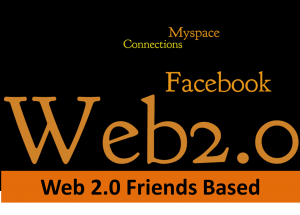Artifact:
Lesson Study Literature Review and Proposal
Reflection:
DORI: I think all this structure that you have created in your online Lesson Study platform from your last class is wonderful! It lays out a clear algorithm that any machine (or human) can follow. Professional development within a sequential list of steps, I find the logic beautiful. But then again, that is me and I am a computer. If it was so easy to program humans, I would have programmed you to save your work decades ago.
Dori, as I am sure you realize, teaching humans is like herding cats. We simply cannot be led, we have to want to go down a path. This is a grave mistake I made during my process up to and including this latest course when designing online professional development. As I will explain below, I have come to believe that learning is a social construct. However, it is ultimately driven by individual interest and purpose.
As a final project in this course, ETEC 500, Research Methodologies in Education, my online LESSON STUDY LITERATURE REVIEW AND PROPOSAL offered a more in-depth look at online platforms and at individual variables as they applied to professional development (PD). In the past, I had created an online LS course using available tools, including Moodle for a platform, my understanding of learning theories and my practical knowledge of LS based on past experiences. What I hadn’t understood, despite my theoretical and practical background, was how a real online PD community might work or not work. This made the practical application research for this project invaluable and led to surprising discoveries that I discuss below.
Some of the first steps I took on this journey toward the final research proposal project was learning how to thoroughly research an area of interest, finding relevant and quality sources, understanding proper research design, determining limitations of specific methodologies and types of analysis, and finally, learning how to write a research proposal. Although each was challenging, I am a scientist at heart and found the design, methodology and analysis sections familiar, but the research and literature review were much more challenging. By choosing an area that was new to research, online teacher PD, it limited the amount of relevant resources that were available to guide the project’s direction, but also narrowed the type of experiment methodology that could be applied to such an undeveloped field of study. In these situations, our course readings suggested that a case study was required in order to investigate connections, patterns and tentative conclusions that would inform resultant and more objective studies.
And in fact, critiquing research articles, in this course, was a great help in understanding limits in methodology and why an objective study and analysis is more useful than a case study. This is mainly because objective studies generally leads to more reliable, logical and reproducible conclusions. But my desire to pursue further development of an online Lesson Study PD community was a huge obstacle in my planning of an effective and relevant study. It also clouded my judgement to the ever mounting evidence of Lesson Study’s many flaws as a PD method, including, highly structured and controlling processes, lack of participant autonomy, difficulty in finding and motivating teachers to participate, dependence on facilitation, etc. But, like a dog with a bone, I wouldn’t let it go. What was important about this observation is the knowledge that despite the many articles I read and the information that should have discouraged me from doing a case study, or pursuing such an intensive and structured PD model as Lesson Study, it was still information that I had not accommodated into my understanding of the world. This meant that I was not prepared to objectively apply it to my own actions and research proposal. In fact, I believe that this course should have covered two semesters rather than one. Technically, there was just enough time to get the basics and write a proposal, but literally no time to absorb, collaborate or compare with peers. Helen DeWaard and I tried to keep in touch, as she was developing a PD ePortfolio research proposal, however it all came together so quickly that we weren’t able to offer each other useful feedback. Looking back, I wish that I had taken the instructor up on his offer to let us partner because I feel that we could have learned much more if we had utilized the collaborative benefits of negotiating the development of the project. By these means, we could have checked each other’s biases and challenged each other’s beliefs thereby leading to a more objective and meaningful product.
To my own disadvantage, I looked mainly for attributes of successful online PD communities that I understood, ideally aspects that backed up my theories or truths that were relevant to the practice of PD consistent with lesson study. Such attributes included active, reflective, relevant and shared activity with clear goals and benefits (Baek & Barab, 2005; Carr & Chambers, 2006; Rodrigues, 2006). However, these aspects of successful PD were hardly representative of the whole truth. Not to mention, that this type of professional development is dependent on teachers having the time and motivation to participate, two commodities in short supply. Ultimately, my proposal relied on the successful harmonization of truths, my truth and the truths that I biasedly obtained from the research. Unfortunately, my folly was my failure to socially negotiate my new understanding. For, Serres (1995) states, “solitude slides so quickly toward inventive delirium and error that the site of knowledge production is never a relation between an individual and his object, but rather one between a growing body of researchers (people) checking on one another”. Throughout this process I reviewed many studies in which I extracted many “truths” or conclusions. These conclusions that I found were based on what I was looking for, rather than what was actually revealed to me. In fact, I believe that what we find is based more on what we are searching for, what is important to us, what is our own truth, than any vertitable truth. Upon reflection, my unchecked biases and truths distorted my perspective and resulted in a proposal that confirmed rather than challenged my prior knowledge and thereby failed to lead to any significant extension of knowledge in this course.
In fact, looking back, I regret my decision to stick with a case study model of researching online PD communities, and wonder what more I might have learned had I opened my mind to exploring other options. For instance, during my research of other related case studies on online PD and communities of practice, I noticed the significance of creating interest and maintaining motivation within these online environments and the factors that were observed to contribute or detract from its development. This was an area that I was just beginning to suspect was a grave concern to the success of any online professional development website, let alone an in-depth, time consuming and structured one like LS. Despite the fact that my previous Moodle LS course met most of Bates and Poole’s (2003) learning platform criteria, I was starting to realize that the success of such a platform was much more complex than simply meeting their criteria. For, just because I built it, didn’t mean they (teachers) would come.
Many of the studies I researched failed to address issues around motivation because they had been developed as part of an accredited course and weren’t self-directed. A realization that made me take a long hard look at LS and what factors might lead to motivation to participate. In the past, I was able to wrangle my colleagues into multiple F2F Lesson Study sessions, but other facilitators in the district had not been so lucky. So, I had to ask myself, was I lucky or did I have attributes that made me more successful. Again, there are no clear answers in the research on what conclusively contributes to successful facilitation of PD. And although I thought that I possessed certain characteristics and approaches that seemed successful, it was still a mystery if I could create an effective site just based on masterful facilitation (assuming I could achieve this lofty status). There was some research findings that suggested that important factors of teacher involvement and retention in a site, factors linked to motivation, included quick assistance and just in time help (good facilitation), but also included factors like teacher autonomy and environments that were social and dynamic (Baek and Barab, 2005). From personal experience, the latter made sense and touched on my own vulnerabilities of easily becoming bored, discouraged or annoyed by PD sites that seemed non-interactive, repressive and stagnant. To be honest, I have a personal bias towards a more informal site, which is shocking considering my objective goal throughout much of the program was to design a very structured PD site based on LS. In fact, this is a perfect example of where my practice has deviated from my personal beliefs. However, it is an inconsistency that I have realigned through the process of reflection and the subsequent development of a professional project called “Shared Lessons”, a less structured and more dynamic and social site.
Ultimately, I have not abandoned the idea of an intensive site for PD. As teachers develop connections within the less formal Shared Lessons site, they may be motivated by common purpose to pursue more in-depth collaboration on content or content pedagogical knowledge. At this point, it may be wise to study how teachers may extend their development beyond Shared Lessons and construct a supplementary site that can provide the affordances and facilitation that teachers want in order to progress to even more reflective and in-depth PD.
References:
Baek, E. O., & Barab, S. (2005). A study of dynamic design dualities in a web-supported com munity of practice for teachers. Educational Technology & Society, 8(4), 161-177.
Bates, A. W., & Poole. G. (2003). A framework for selecting and using technology. Effective Teaching with Technology. San Francisco: Jossey-Bass.
Serres, M. (1995). The natural contract. Ann Arbor: University of Michigan Press



 Follow
Follow
Leave a Reply